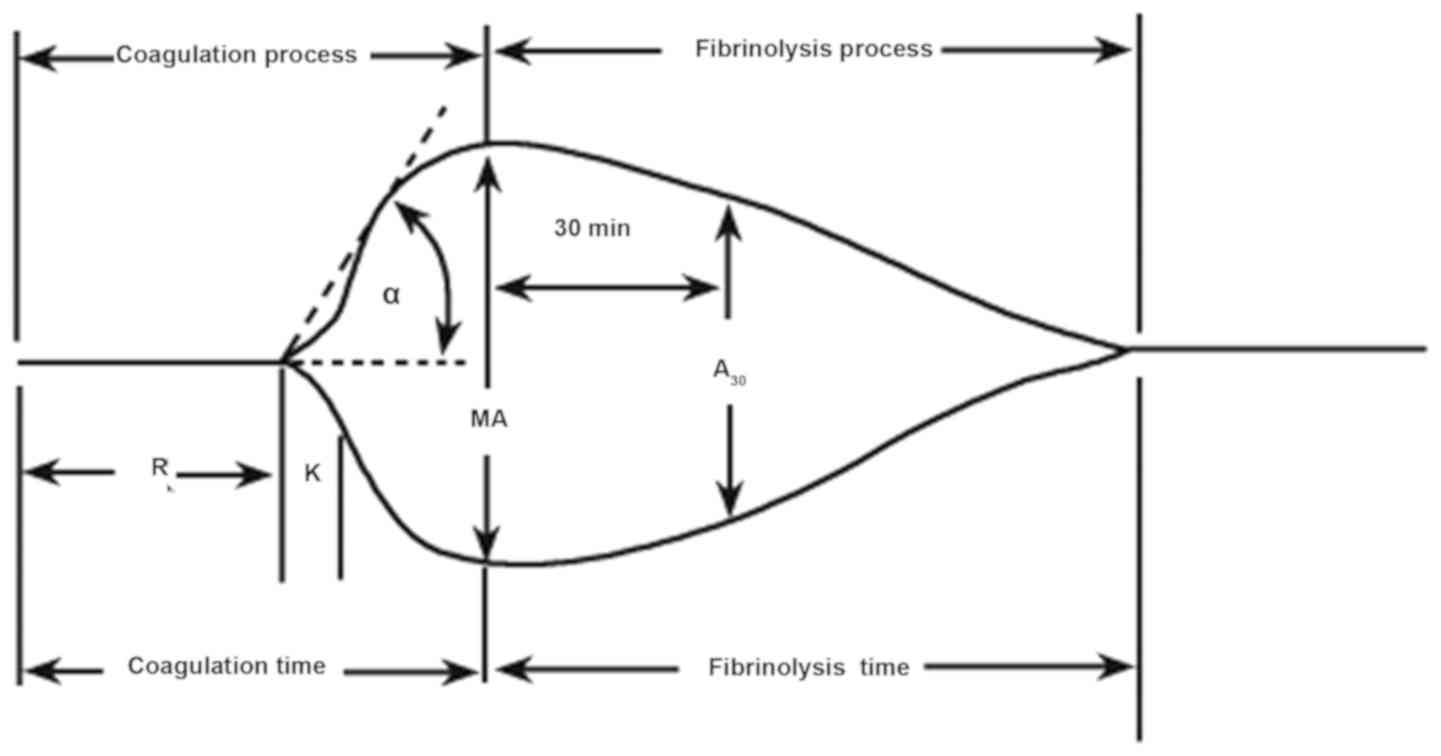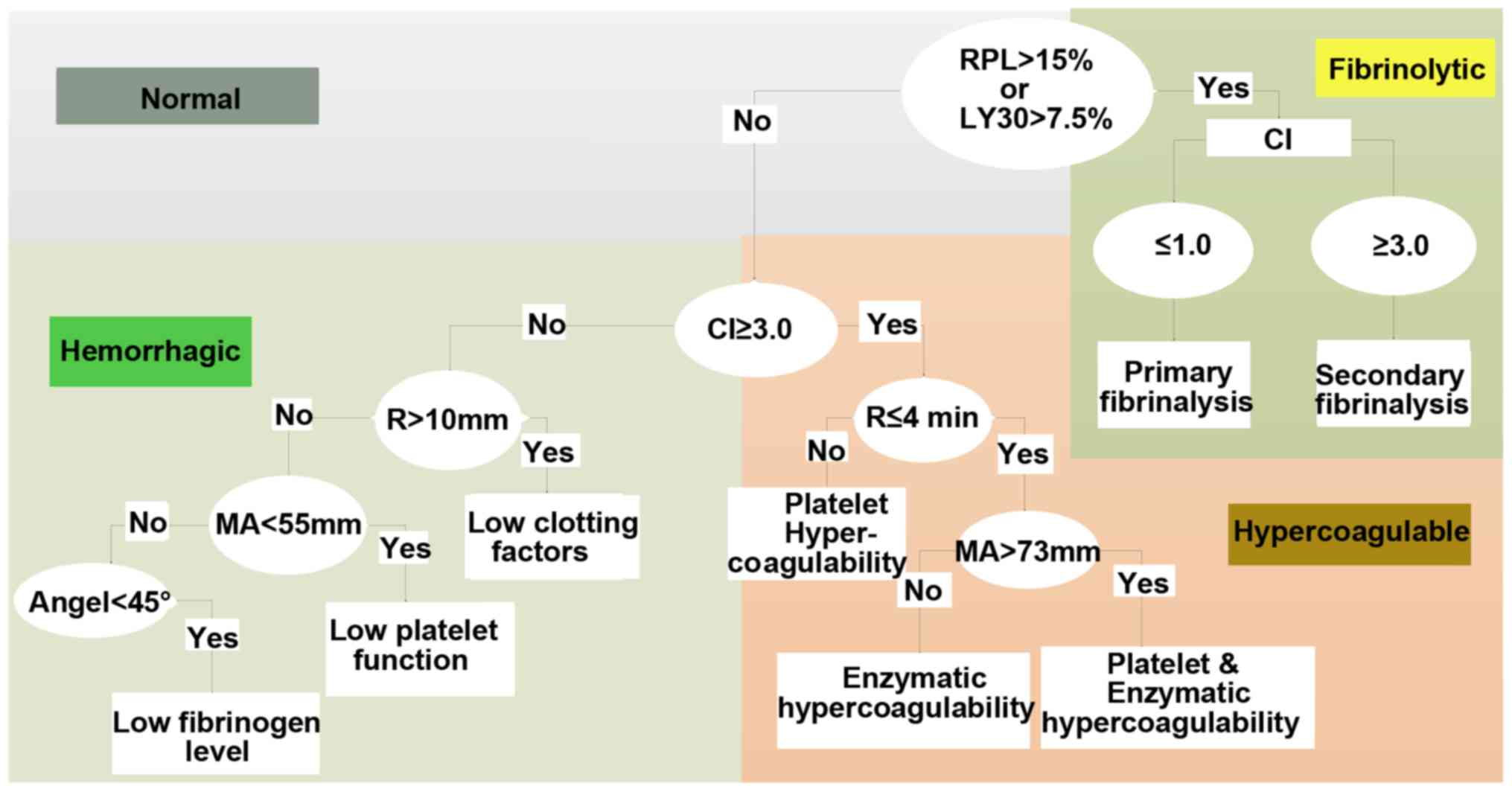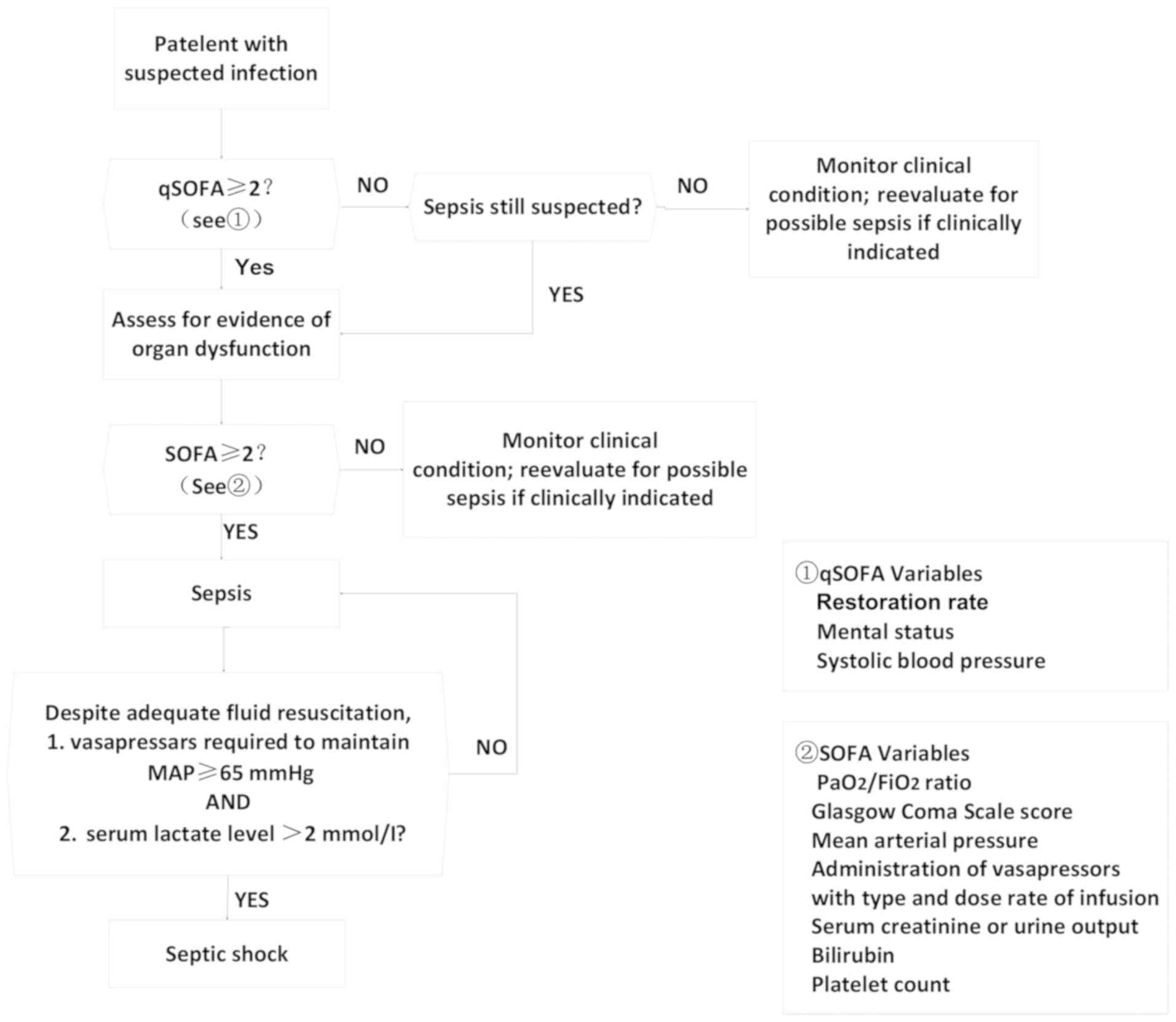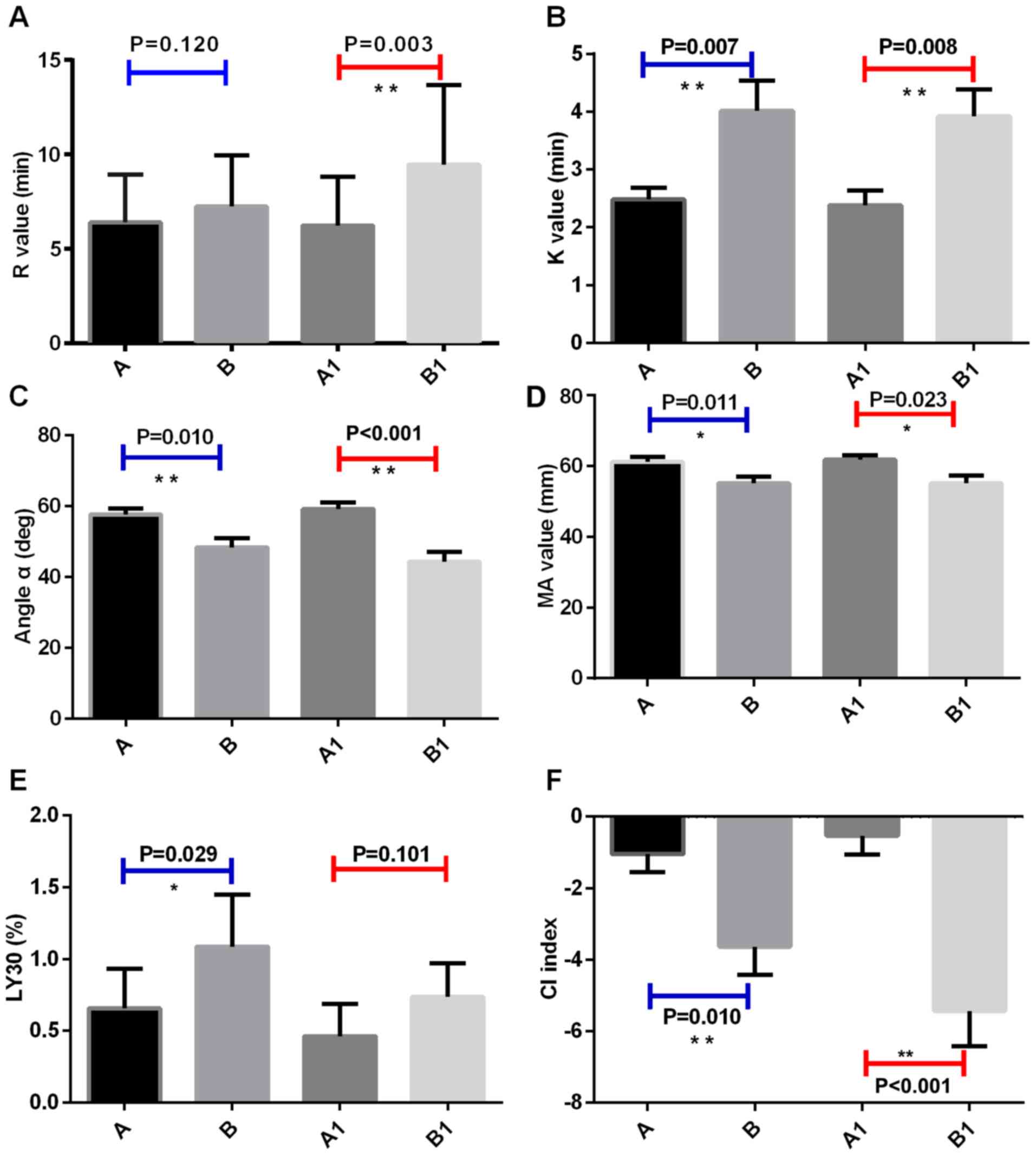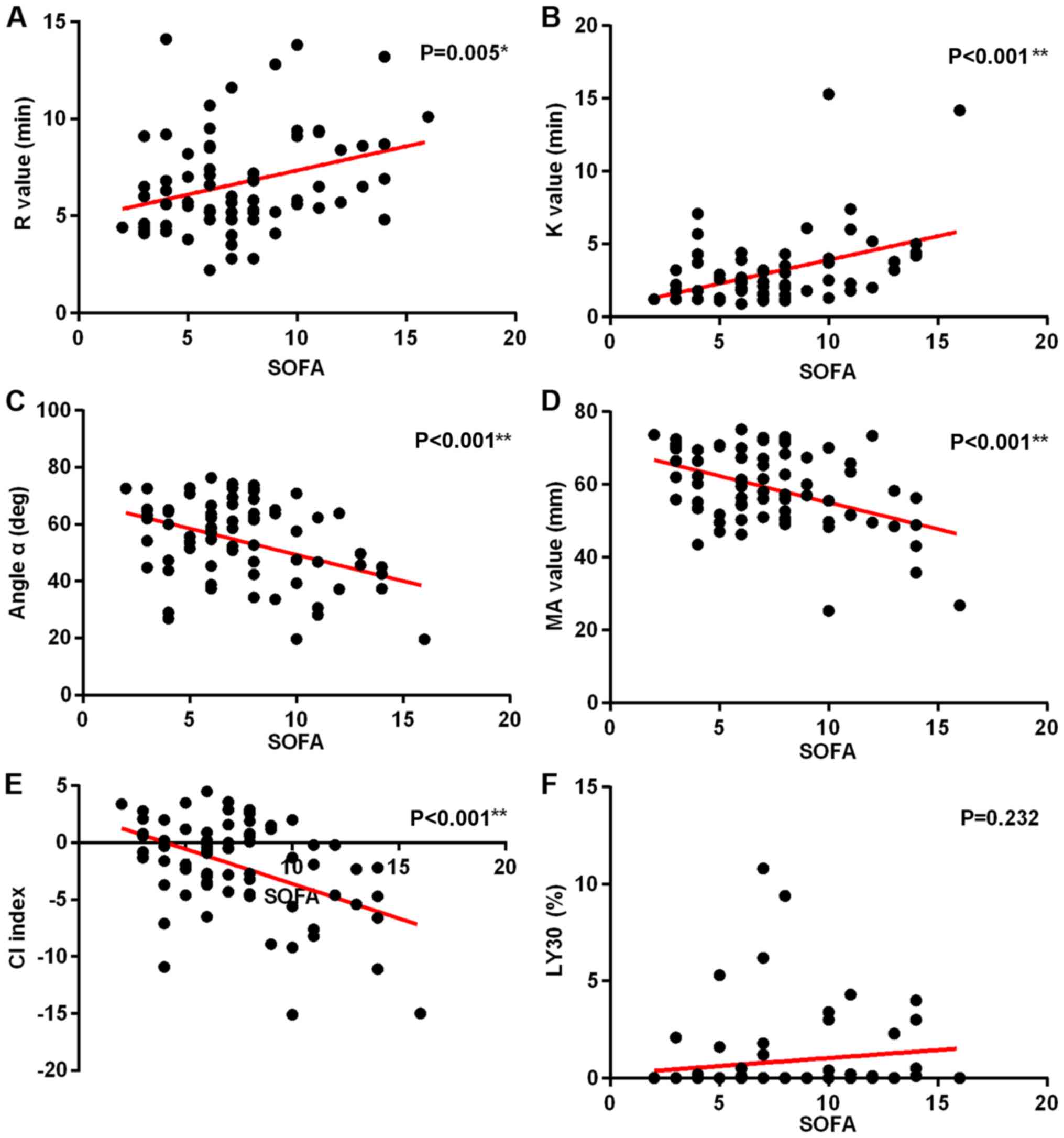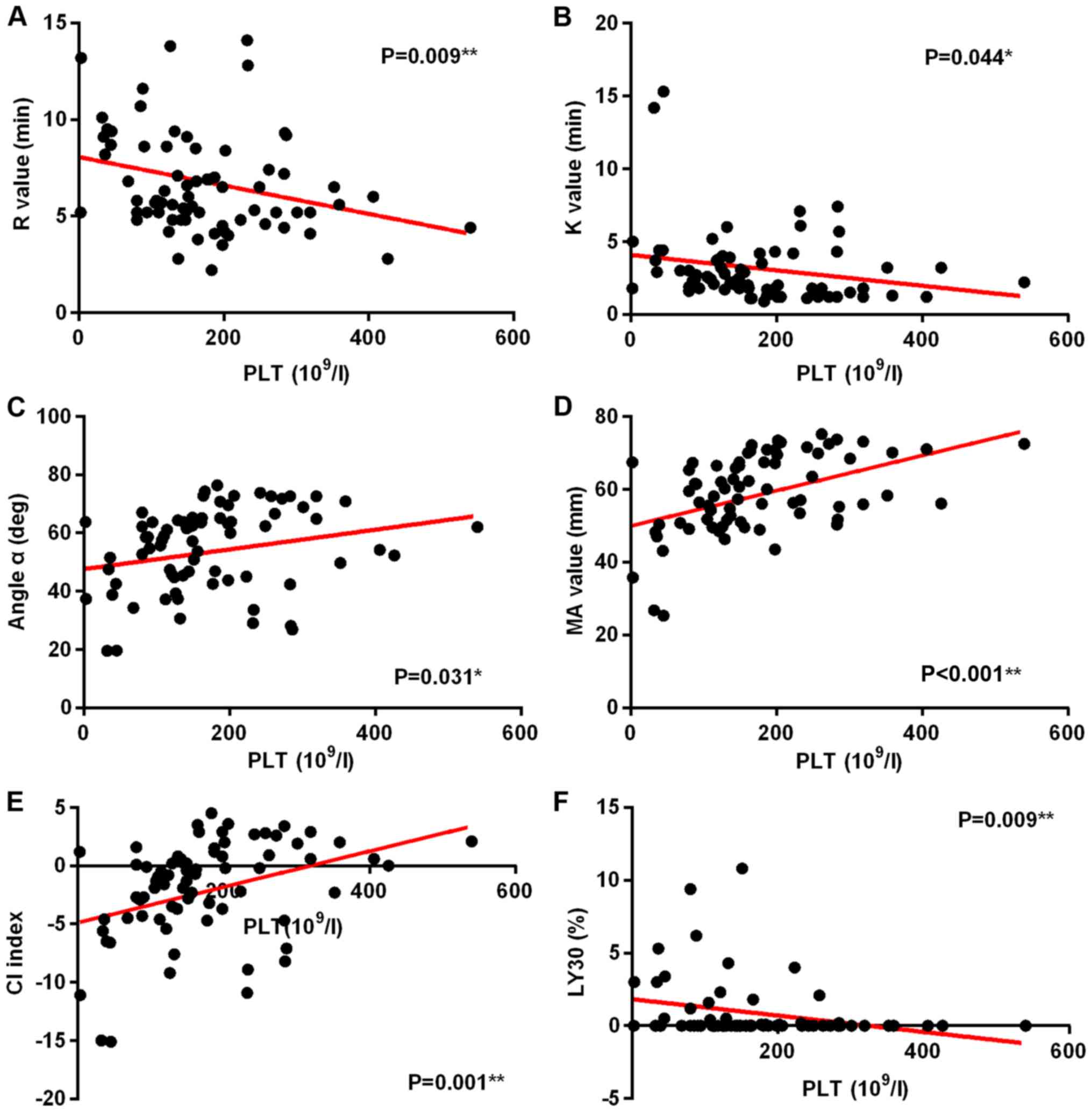|
1
|
Azkárate I, Sebastián R, Cabarcos E,
Choperena G, Pascal M and Salas E: A prospective, observational
severe sepsis/septic shock registry in a tertiary hospital in the
province of Guipuzcoa (Spain). Med Intensiva. 36:250–256. 2012.(In
Spanish). View Article : Google Scholar : PubMed/NCBI
|
|
2
|
Samuels JM, Moore HB and Moore EE:
Coagulopathy in severe sepsis: Interconnectivity of coagulation and
the immune system. Surg Infect (Larchmt). 19:208–215. 2018.
View Article : Google Scholar : PubMed/NCBI
|
|
3
|
Wang Y, Ouyang Y, Liu B, Ma X and Ding R:
Platelet activation and antiplatelet therapy in sepsis: A narrative
review. Thromb Res. 166:28–36. 2018. View Article : Google Scholar : PubMed/NCBI
|
|
4
|
Wang Y, Wang D, Fu J and Liu Y: Predictive
value of SOFA, qSOFA score and traditional evaluation index on
sepsis prognosis. Zhonghua Wei Zhong Bing Ji Jiu Yi Xue.
29:700–704. 2017.(In Chinese). PubMed/NCBI
|
|
5
|
Wang L, Bastarache JA and Ware LB: The
coagulation cascade in sepsis. Curr Pharm Des. 14:1860–1869. 2008.
View Article : Google Scholar : PubMed/NCBI
|
|
6
|
Reikvam H, Steien E, Hauge B, Liseth K,
Hagen KG, Størkson R and Hervig T: Thrombelastography. Transfus
Apheresis Sci. 40:119–123. 2009. View Article : Google Scholar
|
|
7
|
Kozek-Langenecker S: Management of massive
operative blood loss. Minerva Anestesiol. 73:401–415.
2007.PubMed/NCBI
|
|
8
|
Salooja N and Perry DJ:
Thrombelastography. Blood Coagul Fibrinolysis. 12:327–337. 2001.
View Article : Google Scholar : PubMed/NCBI
|
|
9
|
Kunio NR, Differding JA, Watson KM, Stucke
RS and Schreiber MA: Thrombelastography-identified coagulopathy is
associated with increased morbidity and mortality after traumatic
brain injury. Am J Surg. 203:584–588. 2012. View Article : Google Scholar : PubMed/NCBI
|
|
10
|
Ren J, Zhao Y, Yuan Y, Han G, Li W, Huang
Q, Tong Z and Li J: Complement depletion deteriorates clinical
outcomes of severe abdominal sepsis: A conspirator of infection and
coagulopathy in crime? PLoS One. 7:e470952012. View Article : Google Scholar : PubMed/NCBI
|
|
11
|
Sivula M, Pettilä V, Niemi TT, Varpula M
and Kuitunen AH: Thromboelastometry in patients with severe sepsis
and disseminated intravascular coagulation. Blood Coagul
Fibrinolysis. 20:419–426. 2009. View Article : Google Scholar : PubMed/NCBI
|
|
12
|
Ostrowski SR, Windeløv NA, Ibsen M, Haase
N, Perner A and Johansson PI: Consecutive thrombelastography clot
strength profiles in patients with severe sepsis and their
association with 28-day mortality: A prospective study. J Crit
Care. 28:317.e1–317.e11. 2013. View Article : Google Scholar
|
|
13
|
Haase N, Ostrowski SR, Wetterslev J, Lange
T, Møller MH, Tousi H, Steensen M, Pott F, Søe-Jensen P, Nielsen J,
et al: Thromboelastography in patients with severe sepsis: A
prospective cohort study. Intensive Care Med. 41:77–85. 2015.
View Article : Google Scholar : PubMed/NCBI
|
|
14
|
Braber A and van Zanten AR: Unravelling
post-ICU mortality: Predictors and causes of death. Eur J
Anaesthesiol. 27:486–490. 2010. View Article : Google Scholar : PubMed/NCBI
|
|
15
|
Namendys-Silva SA, Texcocano-Becerra J and
Herrera-Gómez A: Prognostic factors in critically ill patients with
solid tumours admitted to an oncological intensive care unit.
Anaesth Intensive Care. 38:317–324. 2010.PubMed/NCBI
|
|
16
|
Jianmin Q, Xueliang Y, Liqin L, Yongsheng
W, Licang H and Yuanxin H: Value of continuous video EEG and EEG
responses to thermesthesia stimulation in prognosis evaluation of
comatose patients after cardiopulmonary resuscitation. Open Med
(Wars). 13:35–40. 2018. View Article : Google Scholar : PubMed/NCBI
|
|
17
|
Singh RK, Poddar B, Baronia AK, Azim A,
Gurjar M, Singhal S, Srivastava S and Saigal S: Audit of patients
with severe acute pancreatitis admitted to an intensive care unit.
Indian J Gastroenterol. 31:243–252. 2012. View Article : Google Scholar : PubMed/NCBI
|
|
18
|
Qiao Q, Lu G, Li M, Shen Y and Xu D:
Prediction of outcome in critically ill elderly patients using
APACHE II and SOFA scores. J Int Med Res. 40:1114–1121. 2012.
View Article : Google Scholar : PubMed/NCBI
|
|
19
|
Goulden R, Hoyle MC, Monis J, Railton D,
Riley V, Martin P, Martina R and Nsutebu E: qSOFA, SIRS and NEWS
for predicting inhospital mortality and ICU admission in emergency
admissions treated as sepsis. Emerg Med J. 35:345–349. 2018.
View Article : Google Scholar : PubMed/NCBI
|
|
20
|
Mato A, Fuchs BD, Heitjan DF, Mick R,
Halpern SD, Shah PD, Jacobs S, Olson EM, Schuster SJ, Ujjani C, et
al: Utility of the systemic inflammatory response syndrome (SIRS)
criteria in predicting the onset of septic shock in hospitalized
patients with hematologic malignancies. Cancer Biol Ther.
8:1095–1100. 2009. View Article : Google Scholar : PubMed/NCBI
|
|
21
|
Rhodes A, Evans LE, Alhazzani W, Levy MM,
Antonelli M, Ferrer R, Kumar A, Sevransky JE, Sprung CL, Nunnally
ME, et al: Surviving Sepsis Campaign: International Guidelines for
Management of Sepsis and Septic Shock: 2016. Crit Care Med.
45:486–552. 2017. View Article : Google Scholar : PubMed/NCBI
|
|
22
|
Knoebl P: Blood coagulation disorders in
septic patients. Wien Med Wochenschr. 160:129–138. 2010. View Article : Google Scholar : PubMed/NCBI
|
|
23
|
Levi M and Schultz M: The
inflammation-coagulation axis as an important intermediate pathway
in acute lung injury. Crit Care. 12:144–147. 2008. View Article : Google Scholar : PubMed/NCBI
|
|
24
|
Lissalde-Lavigne G, Combescure C, Muller
L, Bengler C, Raillard A, Lefrant JY and Gris JC: Simple
coagulation tests improve survival prediction in patients with
septic shock. J Thromb Haemost. 6:645–653. 2008. View Article : Google Scholar : PubMed/NCBI
|
|
25
|
Luddington RJ:
Thrombelastography/thromboelastometry. Clin Lab Haematol. 27:81–90.
2005. View Article : Google Scholar : PubMed/NCBI
|
|
26
|
Nakae H, Endo S, Inada K, Takakuwa T,
Kasai T and Yoshida M: Relationship between thromboxane B2 and
6-keto-prostaglandin F1 alpha in sepsis. Res Commun Chem Pathol
Pharmacol. 83:297–302. 1994.PubMed/NCBI
|
|
27
|
Alarcón G, Fardella P, Conte G, Vargas V,
Parada X and Cuneo M: Changes in coagulation in patients with
sepsis. Rev Med Chil. 121:537–541. 1993.(In Spanish). PubMed/NCBI
|
|
28
|
Wang H, Li Z, Yin M, Chen XM, Ding SF, Li
C, Zhai Q, Li Y, Liu H and Wu DW: Combination of Acute Physiology
and Chronic Health Evaluation II score, early lactate area, and
N-terminal prohormone of brain natriuretic peptide levels as a
predictor of mortality in geriatric patients with septic shock. J
Crit Care. 30:304–309. 2015. View Article : Google Scholar : PubMed/NCBI
|
|
29
|
Chen FG and Koh KF: Septic shock in a
surgical intensive care - validation of multiorgan and APACHE II
scores in predicting outcome. Ann Acad Med Singapore. 23:447–451.
1994.PubMed/NCBI
|
|
30
|
Levi M and Scully M: How I treat
disseminated intravascular coagulation. Blood. 131:845–854. 2018.
View Article : Google Scholar : PubMed/NCBI
|
|
31
|
Di Nisio M, Baudo F, Cosmi B, D'Angelo A,
De Gasperi A, Malato A, Schiavoni M and Squizzato A; Italian
Society for Thrombosis and Haemostasis, : Diagnosis and treatment
of disseminated intravascular coagulation: Guidelines of the
Italian Society for Haemostasis and Thrombosis (SISET). Thromb Res.
129:e177–e184. 2012. View Article : Google Scholar : PubMed/NCBI
|
|
32
|
Louw SJ, Mayne ALH and Mayne ES:
Evaluation of the diagnostic utility of individual parameters in
the disseminated intravascular coagulation (DIC) panel for use in
under resourced settings. Int J Lab Hematol. 40:e46–e48. 2018.
View Article : Google Scholar : PubMed/NCBI
|
|
33
|
Masuda T, Shoko T and Deguchi Y: Clinical
investigation of coagulation markers for early detection of
sepsis-induced disseminated intravascular coagulation: A
single-center, prospective observational study. Clin Appl Thromb
Hemost. 24:1082–1087. 2018. View Article : Google Scholar : PubMed/NCBI
|
|
34
|
Dorman BH, Spinale FG, Bailey MK, Kratz JM
and Roy RC: Identification of patients at risk for excessive blood
loss during coronary artery bypass surgery: Thromboelastography
versus coagulation screen. Anesth Analg. 76:694–700. 1993.
View Article : Google Scholar : PubMed/NCBI
|
|
35
|
Rocha LL, Pessoa CM, Neto AS, do Prado RR,
Silva E, de Almeida MD and Correa TD; POCKET Trial Investigators, :
Thromboelastometry versus standard coagulation tests versus
restrictive protocol to guide blood transfusion prior to central
venous catheterization in cirrhosis: Study protocol for a
randomized controlled trial. Trials. 18:852017. View Article : Google Scholar : PubMed/NCBI
|
|
36
|
Bowbrick VA, Mikhailidis DP and Stansby G:
Influence of platelet count and activity on thromboelastography
parameters. Platelets. 14:219–224. 2003. View Article : Google Scholar : PubMed/NCBI
|















